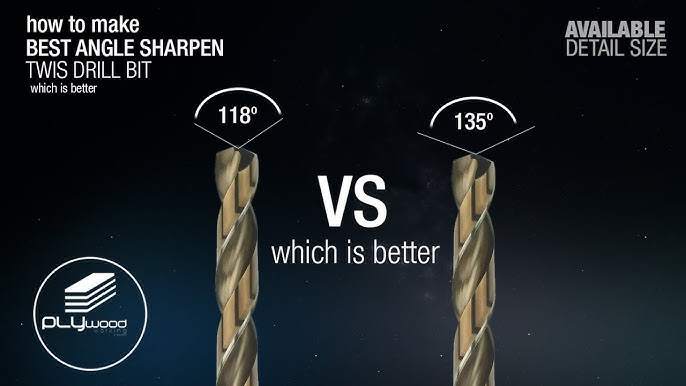118 Drill Bit vs 135 Drill Bit: What’s the Difference?

Choosing between a 118 drill bit and a 135 drill bit can be tricky, especially if you’re unsure about which one works best for your project. Each type has its strengths and is suited for specific tasks. This guide will explain the differences in simple terms, helping you pick the right drill bit for your job.
What is a 118 Drill Bit?
The 118 drill bit has a sharper, more pointed tip. It’s ideal for working with softer materials like wood or aluminum but not the best choice for hard materials like steel, as it tends to dull quickly.
Key Features:
- Works best on softer materials.
- Has a more aggressive cutting action, which makes it great for handheld drills.
- Can slip on curved or slippery surfaces, so it’s less precise in such conditions.
- Produces rougher edges when cutting hard materials.
What is a 135 Drill Bit?
The 135 drill bit has a flatter, less pointed tip and is designed for harder materials like steel. It stays sharp longer and is more precise, especially for tasks that need repeated drilling.
Key Features:
- Perfect for hard materials like stainless steel or tougher metals.
- Produces cleaner and more precise holes.
- Its shorter and sturdier design makes it less likely to wobble or slip.
- Requires more effort (axial thrust) to drill.
Differences Between 118 Drill Bit and 135 Drill Bit
| Feature | 118 Drill Bit | 135 Drill Bit |
|---|---|---|
| Best For | Softer materials like wood, aluminum | Harder materials like steel, stainless steel |
| Tip Shape | Sharper, more pointed | Flatter, less pointed |
| Durability | Wears out quickly on hard materials | Stays sharp longer |
| Precision | Can slip on curved/slippery surfaces | Great for curved or slippery surfaces |
| Cutting Edges | Longer cutting edges, aggressive cut | Shorter cutting edges, smoother cut |
| Chisel Length | Shorter chisel, less aggressive | Longer chisel, better for repeated use |
Which One Should You Choose?
Choose a 118 Drill Bit If:
- You’re working with softer materials like wood or aluminum.
- You need a lightweight and easy-to-use drill bit for handheld operations.
- You don’t need precision on curved or slippery surfaces.
Choose a 135 Drill Bit If:
- You’re working with hard materials like steel or tough metals.
- You need clean, precise holes for professional results.
- Your project involves repeated drilling or tougher materials.
Final Thoughts
Both the 118 drill bit and 135 drill bit are great tools, but they are designed for different tasks. The 118 is perfect for softer materials and general use, while the 135 is a better choice for hard materials and precision work.
When choosing, consider:
- The material you’re drilling.
- Whether you need precision or can manage with less accuracy.
- How often you’ll use the bit on tough surfaces.






